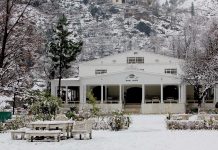As the excavation advanced, widespread restoration was carried out on the structures of Herodium. Nowadays it is possible to walk on a contented path to the top of the fortress, climb its walls, and enjoy, as in the past, the view of the surrounding region.
/ month
placeholder text
Post List
Editor's Picks
First Time in Test Cricket History, Two Last Wicket Stands Put up on Century Partnerships
India tour of England, 1st Investec Test: England v...
The Blood Moon – A Thrilling Event of Lunar Eclipse
On April 15, 2014, people around the world saw...
How to Survive in the Wilderness? Tips for When You’re Lost
How to Survive in the Wilderness: - If you find...
The Complex Behavior of Songbirds
Songbirds' singing is a complex behavior that must be...
The Sidecar and Automatic Gear Box
The Sidecar
In 1890 the French engineer Jean Bertoux Linvented...
Latefossen Waterfall Hordaland Norway
Latefossen is also pronounced like Lotefossen, maybe the most...
Jeita Grotto: Wonderful Underground Caves in Lebanon
Jeita Grotto is actually a cave system that stretches...
Delicate Vases Designed to Gently Sway When Flower Petals Drop
Some artists are always busy in to create something...
Breathtaking Uli Biaho Tower, Pakistan
Uli Biaho is a steep mountain near Trango Towers...
Don't Miss
5 Benefits of Using MU-MIMO That Everyone Should Know
With the advent of the latest WLAN standard 802.11ac,...
Rose Canyon Lake Tucson, Arizona
The magnificent Rose Canyon Lake is situated 48 kilometers...
Pobiti Kamani: The Mysterious Stone Forest of Bulgaria
Pobiti Kamani Stone Forest is a breathtaking natural area...
Magnificent Captures of Bears Family in Snowy Surroundings.
Wildlife French photographer Sylvain Cordier, stumbled upon the magnificent...
Rufous Whistler – Nature’s Haunting Melody
Habitat: The Rufous Whistler (Pachycephala rufiventris) is common throughout...
Layers of Glass Form 3D Landscapes and Seascapes
Layers of Glass Form 3D Landscapes and Seascapes. Lucie...
The Top Countries for International Students: Where to Pursue Your Education Abroad
The Top Countries for International Students
Choosing a country to...
Interesting Statements About Marijuana
Interesting Statements About Marijuana
Since ancient times, hemp has been...
The Power of Coaching in Achieving Success
The term power of coaching refers to a one-to-one...
Charismatic Planet © 2024 . All Rights Reserved.

![herodium-1[2]](https://charismaticplanet.com/wp-content/uploads/2014/12/herodium-12.jpg)
![herodium-2[2]](https://charismaticplanet.com/wp-content/uploads/2014/12/herodium-22.jpg)
![herodium-3[2]](https://charismaticplanet.com/wp-content/uploads/2014/12/herodium-32.jpg)
![herodium-4[2]](https://charismaticplanet.com/wp-content/uploads/2014/12/herodium-42.jpg)
![herodium-6[2]](https://charismaticplanet.com/wp-content/uploads/2014/12/herodium-62.jpg)
![herodium-7[2]](https://charismaticplanet.com/wp-content/uploads/2014/12/herodium-72.jpg)
![herodium-8[2]](https://charismaticplanet.com/wp-content/uploads/2014/12/herodium-82.jpg)
![herodium-9[2]](https://charismaticplanet.com/wp-content/uploads/2014/12/herodium-92.jpg)
![herodium-11[2]](https://charismaticplanet.com/wp-content/uploads/2014/12/herodium-112.jpg)





